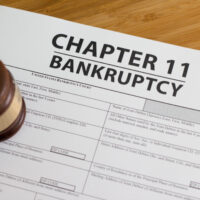What to Expect When Filing Chapter 11 Bankruptcy

Filing for Chapter 11 bankruptcy can be a strategic option for small business owners in Ventura County who need to restructure their debts while continuing operations. Unlike other bankruptcy chapters, Chapter 11 offers a path to reorganize and regain financial stability without liquidating assets. At Rounds & Sutter, LLP, our Ventura Chapter 11 bankruptcy lawyers guide clients in Oxnard, Camarillo and throughout the region through the complexities of Chapter 11 bankruptcy, ensuring they understand every step of the process.
Who Can File for Chapter 11 Bankruptcy?
Chapter 11 is primarily used by businesses, including corporations, partnerships, and sole proprietorships, but it is also available to individuals with substantial assets and debts exceeding the limits for Chapter 13 bankruptcy. Small business owners often turn to Chapter 11 when their operations are viable, but they need relief from creditors to restructure debts and continue operating.
The Chapter 11 Bankruptcy Process
1. Filing the Petition
The process begins with filing a bankruptcy petition in federal court. This filing includes a comprehensive disclosure of your financial situation, including:
- A list of assets and liabilities
- Current income and expenses
- A statement of financial affairs
- A schedule of executory contracts and leases
Once the petition is filed, an automatic stay is issued, halting collection actions and giving you or your business breathing room to create a reorganization plan.
2. Operating as a Debtor-in-Possession
In Chapter 11 cases, debtors typically continue to operate their businesses as a “debtor-in-possession” (DIP). As a DIP, you maintain control of your business operations but must comply with specific court-supervised guidelines. Major decisions, such as selling assets, obtaining new financing, or entering contracts, require court approval.
3. Developing a Reorganization Plan
The centerpiece of a Chapter 11 case is the reorganization plan. This plan outlines how you intend to repay creditors over time, restructure debts, or adjust operational costs to improve cash flow. Plans may include strategies like:
- Reducing secured debt by surrendering non-essential assets
- Modifying the terms of unsecured debt repayment
- Reworking leases or contracts to lower costs
Small business owners may benefit from a streamlined process known as a “Subchapter V” filing, introduced under the Small Business Reorganization Act. This option simplifies the plan confirmation process and reduces administrative costs, making Chapter 11 more accessible for small businesses.
4. Creditors’ Input and Court Approval
Creditors are given an opportunity to review and vote on the reorganization plan. To gain approval, the plan must meet certain criteria, such as being feasible and fair. The court must also confirm the plan, ensuring it complies with bankruptcy laws and adequately addresses creditors’ rights.
5. Implementation of the Plan
Once approved, the reorganization plan becomes binding. You are responsible for adhering to its terms, making payments to creditors, and operating within the outlined budget and financial guidelines. Successful implementation can allow your business to emerge stronger and more sustainable.
Benefits of Chapter 11 Bankruptcy
- Stay in Business: Chapter 11 allows businesses to continue operating while restructuring debt, maintaining jobs, and serving customers.
- Flexibility in Debt Restructuring: Debtors can renegotiate contracts, modify repayment terms, and prioritize essential operations.
- Protection from Creditors: The automatic stay stops foreclosure, repossession, and lawsuits, giving you time to reorganize.
- Opportunity to Save Valuable Assets: Unlike Chapter 7, which involves liquidation, Chapter 11 focuses on retaining assets critical to your business or personal financial recovery.
Challenges of Chapter 11 Bankruptcy
While Chapter 11 offers significant advantages, it also presents unique challenges. Filing Chapter 11 involves extensive documentation, court proceedings, and professional fees, making it more costly and complex than other forms of bankruptcy. (The Subchapter V process provides a simpler solution for those who qualify.) Chapter 11 is also a time-intensive process, and completing the reorganization plan and gaining court approval can take months or even years. Another concern for some is that business decisions during bankruptcy are subject to court approval, limiting autonomy.
Is Chapter 11 Right for You?
Determining whether Chapter 11 is the right path requires a thorough analysis of your financial situation, goals, and the long-term viability of your business. Working with an experienced bankruptcy attorney is crucial to navigating the process and developing a plan that meets your needs while complying with legal requirements.
Let Rounds & Sutter Help You
At Rounds & Sutter, we have extensive experience assisting individuals and small business owners in Oxnard and Ventura County with Chapter 11 bankruptcy. Our team will work closely with you to evaluate your options, protect your assets, and develop a reorganization plan tailored to your unique circumstances.
If you are considering filing for Chapter 11 bankruptcy, contact our office today at 805-650-7100 for a free consultation. We are here to help you take the first step toward financial stability and a brighter future.
